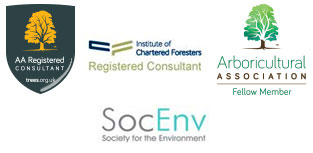British Standard 5837 (BS 5837) Reports -By carefully considering and making provision for trees in the context of a new site layout, trees can add maturity and value to a development. However, poor planning can result in unnecessary tree loss, inappropriate tree retention and undesirable living conditions for both trees and people.
Local Planning Authorities (LPA’s) have a duty to consider them when determining any planning application.
LPA’s will frequently require that a tree survey is submitted with any planning application and may refuse to register an application until such a survey is provided.
In 2008 Central Government rationalised the Planning Application Form (1App) and published Circular 02/2008 and the supporting document ‘Validation of Planning Applications’. The consequence of this for tree owners is that, since they are a ‘material consideration’ in the development process, prior to registering an application, LPA’s are required to ensure a tree survey accompanies any application where there are trees on or immediately adjacent to a development site. Applications submitted without this information will inevitably be delayed and may even be refused on the basis that inadequate information was submitted.
All our consultants have years of experience both working for LPA’s and dealing with them on the behalf of developers. We understand the requirements of LPA’s and are able to speedily present the necessary information to not only ensure the application is registered, but that the arboricultural issues are properly presented so as to improve the chances of a scheme being awarded planning permission.
All our work in this context is carried out according to the guiding principles of British Standard 5837 (BS5837) ‘Trees in Relation to Design, Demolition and Construction – Recommendations’, We are able to provide:-
Tree Constraints Plans (TCP) – A means of graphically presenting to the developer the identified arboricultural constraints so as to guide the design process is what part of a site is, in arboricultural terms, developable and what parts might need to be set aside in the interests of trees and amenity.
Tree Protection Plans (TPP) – A means of graphically presenting where tree protective barriers are to be sited around any trees to be retained.
Arboricultural Impact Assessments (AIA) – A report, often required by LPA’s, identifying what impacts might arise from a particular proposal.
Arboricultural Method Statements (AMS) – Where a proposal gives rise to arboricultural impacts an AMS provides guidance as to how they might be mitigated or compensated for.
We are regularly instructed by both developers and LPA’s regarding trees on development sites.



